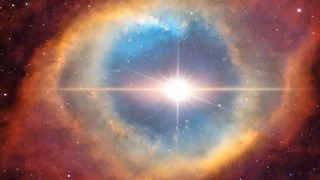
‘Cosmic Miracle’: James Webb Telescope Shatters Records, Discovers Earliest Galaxy Ever Seen
The James Webb Space Telescope (JWST) has once again rewritten cosmic history, spotting the most distant galaxy ever observed, a mere 280 million years after the Big Bang. This groundbreaking discovery, dubbed "MoM z14" (the mother of all early galaxies), is hailed as a "cosmic miracle" by the research team, pushing the boundaries of our understanding of the early universe.

Prior to this, JADES-GS-z14-0 held the record, existing 300 million years after the Big Bang. MoM z14 boasts a redshift of z = 14.44, surpassing JADES-GS-z14-0's z = 14.32, solidifying its place as the current record holder.
"First and foremost, at the moment, this is the most distant object known to humanity...MoM z14 existed when the universe was about 280 million years old - we're getting quite close to the Big Bang," explained Pieter van Dokkum, Yale University professor and team member. To put it in perspective, sharks have been around on Earth longer!
One of the most remarkable aspects of this discovery is that JWST wasn't even expected to find galaxies *this* early in the universe's history, especially so early in its mission. According to van Dokkum, there are "over 100 more relatively bright galaxies in the very early universe than were expected based on pre-JWST observations."
The team has also gleaned valuable insights into MoM z14's characteristics. It's significantly smaller than the Milky Way, about 50 times smaller, and exhibits emission lines indicating the presence of elements like nitrogen and carbon. These elements tell a vital story.
"The emission lines are unusual; it indicates that the galaxy is very young, with a rapidly increasing rate of forming new stars,” van Dokkum added. It also appears there isn't a lot of neutral hydrogen gas surrounding it, which scientists find surprising.
The presence of carbon and nitrogen suggests that even earlier, simpler galaxies must have existed before MoM z14, comprised solely of hydrogen and helium. These heavier elements are forged in stars and dispersed through supernova explosions. Therefore, finding carbon and nitrogen suggests a previous generation of star formation.
While MoM-z14 is fairly compact, just 240 light-years across, it's undergoing a period of rapid star formation. Its abundance of nitrogen relative to carbon is similar to that of globular clusters in the Milky Way, hinting at similar star formation processes even in the nascent universe.

Looking ahead, astronomers are optimistic about finding even earlier galaxies. Van Dokkum closed by noting, "The JWST continues to push the boundary beyond where we thought it was, and at this point I would not be surprised if we find galaxies at z =15 or z =16!" The capabilities of the JWST are continually surpassing expectations, promising even more revelations about the dawn of the cosmos.
This discovery raises profound questions about the formation of the first galaxies and the conditions of the early universe. What other secrets does the universe hold? Share your thoughts and theories in the comments below!